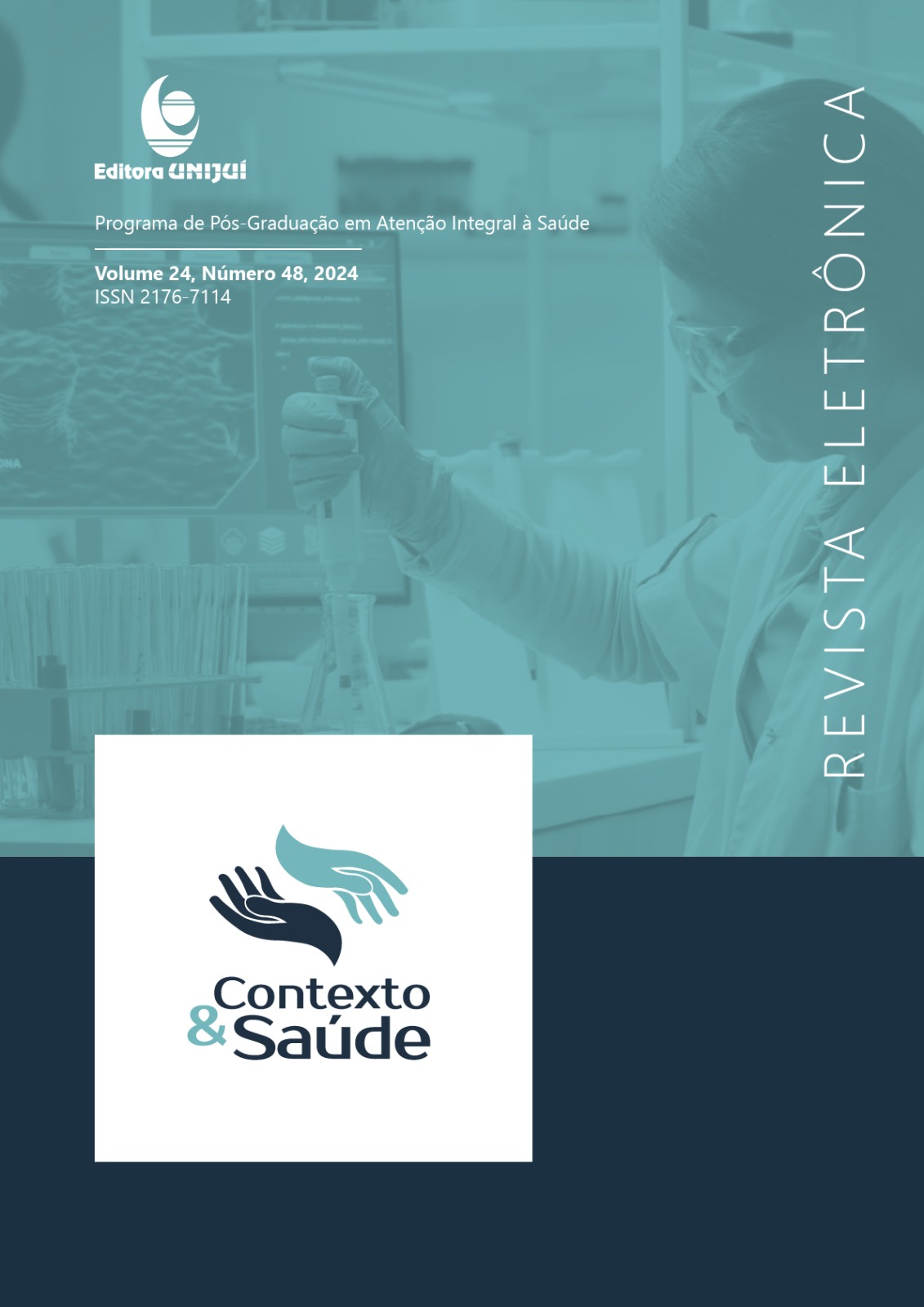Comparative analysis of the protein content and nutritional label of whey protein, plant-based, and animal proteins supplements
DOI:
https://doi.org/10.21527/2176-7114.2024.48.14497Palabras clave:
Dietary supplements, Food analysis, Food labelingResumen
The consumption of protein supplements is increasingly part of the everyday life of adults in general and is associated with a healthier lifestyle. However, a constant lack of commitment to the quality of these products by companies poses risks to consumers’ health. Therefore, this study aims to analyze the protein content and compare it with the nutrition label of different protein supplements. This is an analytical original investigation. It was verified whether the food supplements comply with the label presented through food analysis (Kjeldahl method, ash content and moisture percentage) of the composition of various national and international brands (n=51). A total of 51 different protein-based supplements sold in Brazil were analyzed. The results showed that the protein values advertised on the nutritional label are similar to what the product has (P value > 0,05) and are within the 20% tolerance limit according to the current law. Also, there are similarities between different types of products (P value > 0,05) regarding their ash and water content. In conclusion, the nutrition facts of protein supplements reflect the reality of the bran of these products.
Citas
Maughan RJ, Burke LM, Dvorak J, Larson-Meyer DE, Peeling P, Phillips SM, et al. IOC consensus statement: dietary supplements and the high-performance athlete. Br J Sports Med [Internet]. 2018 Apr. 1;52(7):439. Available at: http://bjsm.bmj.com/content/52/7/439.abstract
Dickinson A, MacKay D. Health habits and other characteristics of dietary supplement users: a review. Nutr J [Internet]. 2014;13(1):14. DOI: https://doi.org/10.1186/1475-2891-13-14
Pehlivanoglu H, Bardakçi HF, Yaman M. Protein quality assessment of commercial whey protein supplements commonly consumed in Turkey by in vitro protein digestibility-corrected amino acid score (PDCAAS). Food Science and Technology. 2022;42.
Fortune Business Insights. Protein supplements market size, share & COVID-19 impact analysis, by source, by product, distribution channel and regional forecast. Fortune Business Insights. 2022:1-156.
Zion Market Research. Whey Protein Products Market Size. 2021 Apr.
Collegiate Board of the National Health Surveillance Agency. RDC No 429. 429 Brazil: Health Ministry; Oct. 8, 2020:1-24.
Scarlato RC, Miranda NGM, Costa RS da, Simões KMA, Vidal IK da S, Rego ECP do. Determinação do teor de proteínas e carboidratos totais em suplementos tipo Whey Protein. Rev Inst Adolfo Lutz [Internet]. out. 2016;25;75:1-7. Available at: https://periodicos.saude.sp.gov.br/RIAL/article/view/33527
Farias CS, Stefani GP, Schneider CD, Lando VR. Análise de concentração de proteínas em diferentes tipos de suplementos proteicos nacionais. RBNE – Revista Brasileira de Nutrição Esportiva [Internet]. maio 2019;13(81):705-712. Available at: http://www.rbne.com.br/index.php/rbne/article/view/1423
Instituto Adolfo Lutz. Métodos físico-químicos para análise de alimentos. 4. ed. São Paulo: Instituto Adolfo Lutz; 2008. p. 1.020.
Wassertheil S, Cohen J. Statistical Power Analysis for the Behavioral Sciences. Biometrics. 1970;26(3):588.
Souza TM, Sá CC, Favaro ET, Córdoba GMC, Ramos ACS, Nobre JAS. Análise comparativa entre o teor de cafeína informado no rótulo de suplementos para atletas em relação ao quantificado por cromatografia líquida de alta eficiência (CLAE). RBNE – Revista Brasileira de Nutrição Esportiva [Internet]. maio 2019;13(78):265-271. Available at: http://www.rbne.com.br/index.php/rbne/article/view/1304
Molina BP, Paulo A dos S, Ruela CH, Nobre JA dos S, Córdoba GMC, Oliveira RCF. Contaminação microbiológica em alimentos proteicos e energético para atletas. RBNE – Revista Brasileira de Nutrição Esportiva. 2018;12(73):565-573.
Pessoa JG, Oliveira VM de, Novaes CR, Gonçalves JTT, Santana RF. Teor de proteína em suplementos a base de whey protein isolado. RBNE – Revista Brasileira de Nutrição Esportiva [Internet]. 2021 May.;15(92):181-185. Available at: http://www.rbne.com.br/index.php/rbne/article/view/1754
Santos RF, Cislaghi FP de C, Tonial IB. Propriedade proteica e calórica de suplementos alimentares a base de Whey Protein. RBNE – Revista Brasileira de Nutrição Esportiva [Internet]. jul. 2018 jul;12(71):317-326. Available at: http://www.rbne.com.br/index.php/rbne/article/view/1040
Caron-Lienert RS, Bittencourt MM, Gomes MC, Stefani GP. Rotulagem de suplementos de whey protein disponíveis no mercado brasileiro: análise conforme legislação vigente. RBNE – Revista Brasileira de Nutrição Esportiva [Internet]. maio 2021;15(93):248-254. Available at: http://www.rbne.com.br/index.php/rbne/article/view/1677
Maughan RJ. Quality Assurance Issues in the Use of Dietary Supplements, with Special Reference to Protein Supplements. J Nutr [Internet]. 2013;143(11):1843S-1847S. Available at: https://www.sciencedirect.com/science/article/pii/S0022316622013542
Descargas
Archivos adicionales
Publicado
Cómo citar
Número
Sección
Licencia
Derechos de autor 2024 Revista Contexto & Saúde

Esta obra está bajo una licencia internacional Creative Commons Atribución 4.0.
Ao publicar na Revista Contexto & Saúde, os autores concordam com os seguintes termos:
Os trabalhos seguem a licença Creative Commons Atribuição 4.0 Internacional (CC BY 4.0), que permite:
Compartilhar — copiar e redistribuir o material em qualquer meio ou formato;
Adaptar — remixar, transformar e criar a partir do material para qualquer fim, inclusive comercial.
Essas permissões são irrevogáveis, desde que respeitados os seguintes termos:
Atribuição — os autores devem ser devidamente creditados, com link para a licença e indicação de eventuais alterações realizadas.
Sem restrições adicionais — não podem ser aplicadas condições legais ou tecnológicas que restrinjam o uso permitido pela licença.
Avisos:
A licença não se aplica a elementos em domínio público ou cobertos por exceções legais.
A licença não garante todos os direitos necessários para usos específicos (ex.: direitos de imagem, privacidade ou morais).
A revista não se responsabiliza pelas opiniões expressas nos artigos, que são de exclusiva responsabilidade dos autores. O Editor, com o apoio do Comitê Editorial, reserva-se o direito de sugerir ou solicitar modificações quando necessário.
Somente serão aceitos artigos científicos originais, com resultados de pesquisas de interesse que não tenham sido publicados nem submetidos simultaneamente a outro periódico com o mesmo objetivo.
A menção a marcas comerciais ou produtos específicos destina-se apenas à identificação, sem qualquer vínculo promocional por parte dos autores ou da revista.
Contrato de Licença (para artigos publicados a partir de setembro/2025): Os autores mantém os direitos autorais sobre seu artigo, e concedem à Revista Contexto & Saúde o direito de primeira publicação.

